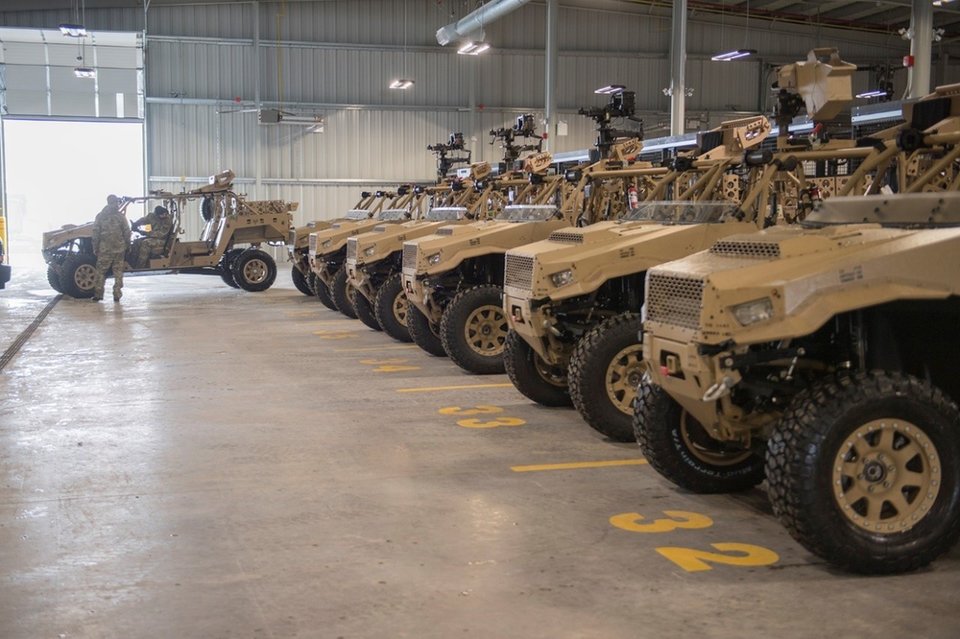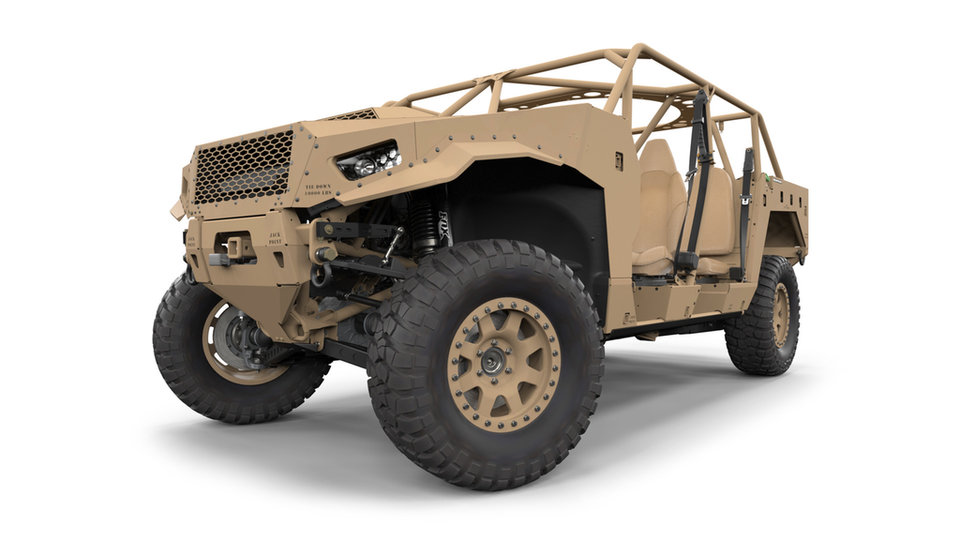land
Rise of the ultra-light military vehicle
The Canadian Special Operations Forces Command has taken the delivery of its first ultra-light combat vehicles from US-based Polaris Industries. And they’re not the only ones interested with multiple countries on the lookout for fast and mobile transportation options. Claire Apthorp takes a look at the ultra-light options out there.
Image: Polaris Government and Defence
Globally, special forces are continuing to bear the brunt of deployed operations and as a result there is a continuing need to adapt and develop these forces. Among the emerging requirements are faster, more agile and deployable ground vehicles than those with which general purpose units are equipped.
A good example of the trend is Canada, which recently began taking delivery of its new Ultra-Light Combat Vehicles (ULCV) from Polaris Government and Defense. The vehicles are being delivered under a contract that will see Canadian special forces receive 62 vehicles this year at a total cost of C$23m.
At the time of first delivery, Major General Mike Rouleau, Commander, Canadian Special Operations Forces Command (CANSOFCOM) stated, “the acquisition of the ULCV is a tremendous step forward in light mobility for the men and women of CANSOFCOM. This platform will serve as a unique complement to our existing mobility arsenal and assist CANSOFCOM in its delivery of agile special operations forces effects for years to come.”
Ultra-light combat vehicle priorities: Fast, mobile, and rapidly deployable
Canada’s UCLV requirement is typical of the type being released by special operations forces worldwide; the objective being to provide fast, mobile transportation over demanding terrain in vehicles that can be specifically configured for rapid deployment such as by the Chinook helicopter.
The ULCV is based on Polaris’ DAGOR vehicle which it has been developing for a number of years. It has a gross vehicle weight of 3,856kg and an overall length of 4.52m and width of 1.88m making it small and compact enough to be air dropped or underslung.
“DAGOR comprises the optimal balance of rapid air transportability, payload capacity and advanced mobility.”
“With seating for up to nine, DAGOR comprises the optimal balance of rapid air transportability, payload capacity and advanced mobility. DAGOR gives an advantage back to dismounted warfighters, allowing formations to move faster, carry more and significantly reduce combat fatigue,” Nick Francis, director, Polaris Government and Defense, told us.
“Polaris military vehicles maintain agility and off-road mobility with a calculated combination of engine and vehicle size, wheel travel and suspension to handle the bumps, ruts, rocks, stumps and sand,” Francis continued. “The Polaris MRZR D and DAGOR are both powered by diesel/JP8 engines, which is significant for missions around the world where clean gas isn’t as accessible. It also provides greater torque for boulder climbing and trails at high desert terrain, such as those seen in Afghanistan and other operational theaters.”
The MRZR D is an even lighter and even more agile vehicle. According to the company, the turbo diesel powered mobility in this four seat variant of the MRZR offers a longer wheelbase and more payload capacity (680kg).

Canada recently began taking delivery of its new Ultra-Light Combat Vehicles from Polaris Government and Defense. Image: Department of National Defence (Canada)
DAGOR’s worldwide demand
Asked about future potential sales for Polaris’ vehicles, Francis was keen to express the interest that DAGOR in particular has spawned.
“We have a lot of interest in DAGOR and several customers,’ he stated. “DAGOR customers include US Special Forces, the US Army’s 82nd Airborne Division, multiple European militaries and additional global forces.”
The US Special Operations Command (USSOCOM) is known to be unhappy with some of the performance of its current fleet of Ground Mobility Vehicle 1.1, which replaced older special operations derivative Humvees. The vehicle in question is the General Dynamics Ordnance and Tactical Systems Flyer72. In January, USSOCOM issued a request for proposals that would look at how to increase both the fire power and the protection of the vehicles.
“DAGOR customers include US Special Forces, the US Army’s 82nd Airborne Division, multiple European militaries and additional global forces.”
However, the 1.1 vehicles were always supposed to be only an initial measure and the US Army is continuing to look for a solution for both is light forces and SOCOM. Late last year a number of other vehicles - all derivatives of existing tactical or commercial vehicles - began trial testing. Among the vehicles proposed are the Flyer72, Boeing’s Phantom Badger, the Vyper Adamas V3X Tactical Vehicle, a proposed High Versatility and Tactical Vehicle from Lockheed Martin, DAGOR and a variant of a Commando Jeep developed by Hendricks Dynamics.

Polaris’ DAGOR has drawn interest from multiple forces across the world for its balance of rapid air transportability, payload capacity and advanced mobility. Image: Polaris Government and Defence
Forming requirements: global procurement, recapitalisation and multinational partnerships
The UK’s special forces are notoriously tight lipped about requirements but they are believed to be looking with keen interest at the USSOCOM programme. Although not as well financed as their American counterparts, UK special forces are given the opportunity to buy equipment outside the normal time lines of UK procurement. And with the annual special operations tradeshow approaching in Tampa next month, UK personnel are expected to go with a shopping list that will include high mobility vehicles.
Further afield, South East Asia is of increasing interest to manufacturers as countries in the region recapitalise their armed forces and learn the lessons of a number of low intensity conflicts. Malaysia is in the midst of an effort to procure a new high mobility vehicle for its special forces, while the Philippines and others are beginning a quiet search for new equipment.
At the recent Defence Services Asia event in Kuala Lumpur a number of vehicles were on display. Local Malaysian companies are hopeful that the government will select an indigenous vehicle for its requirement with Cendana Auto, Kembara Suci and Weststar all exhibiting light 4x4 solutions.
South East Asia is of increasing interest to manufacturers as countries in the region recapitalise their armed forces
Also gauging regional interest were companies from the United Arab Emirates and Turkey, which are both using Malaysia as a launch pad for regional requirements. The UAE’s Nimr announced a tie-up with Malaysia’s DefTech (with the latter acting as a marketing, sales and logistics partner and potential future assembly centre) for the Ajban Long Range Special Operations Vehicle, which Nimr has developed for both the Middle East and Asian markets in particular.
Drawing on the experiences of its own forces, Turkey was also in Malaysia offering a number of more protected but heavier solutions such as Otokar’s armoured Cobra 4x4. Although not helicopter transportable, it offers levels of firepower and armour not available on some of the lighter vehicles. Also on display was Nurol Makina’s NMS tactical protected 4x4.
While Canada’s openness about its programme and equipment deliveries is relatively unusual in the special operations community, it is indicative of the current interest in new lightweight vehicles. Manufacturers globally are looking to exploit this interest and develop vehicles that can be lightweight and retain protection and lethality levels more effectively than in the past.
A camp of Rapidly Deployable System buildings taking shape. Image: World Housing Solutions